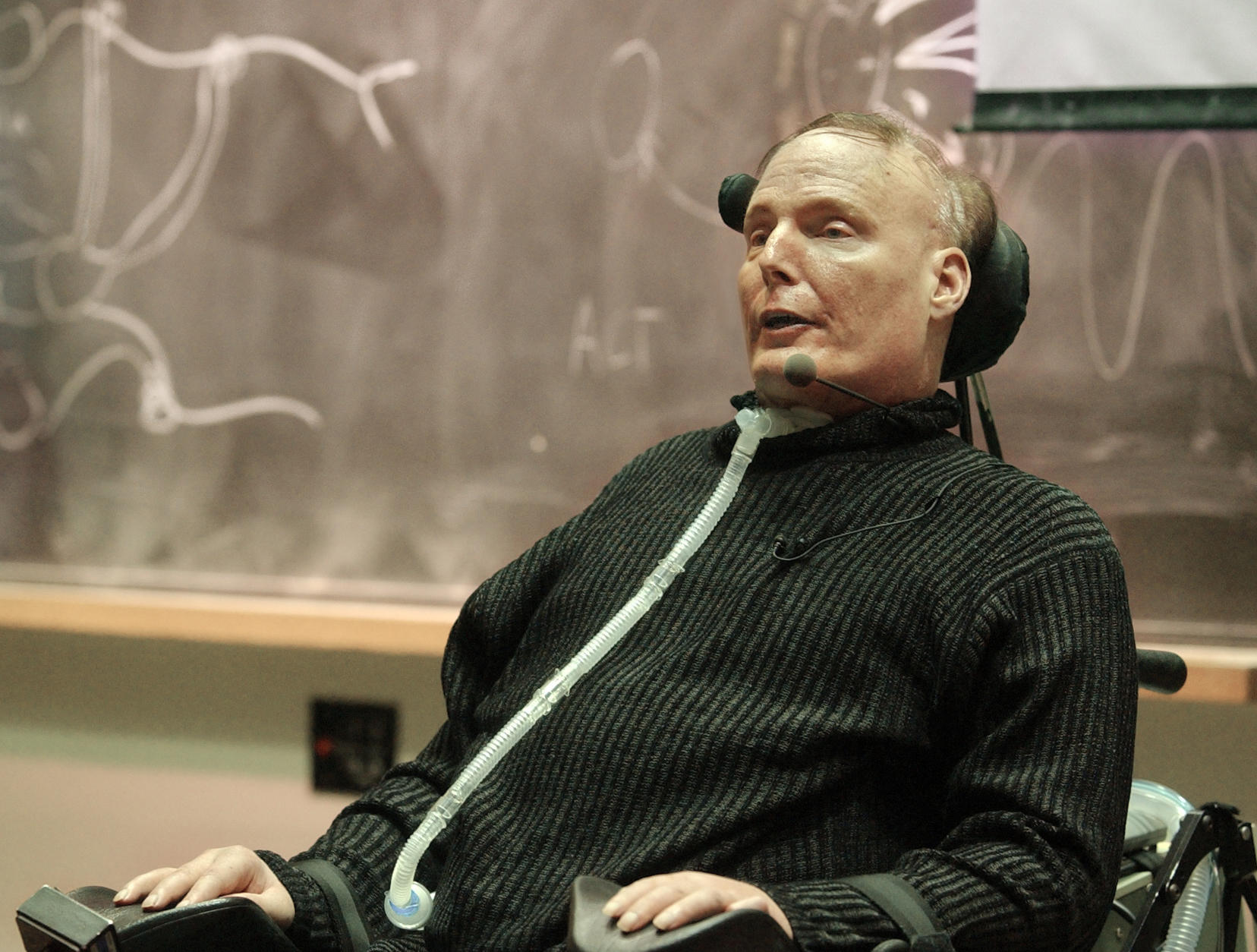The SAD TRUTH Behind the DEATH of Christopher Reeve (Superman) | HO
What would you do if, suddenly, everything you took for granted was taken away from you? The story of Christopher Reeve is not only epic for having been Superman, but also for what he did after the accident that left him paralyzed. Today, I’ll tell you how this man became a true hero off-screen.

Imagine being a world-famous hero, the number one, someone who inspired hope in millions. But in the blink of an eye, everything comes crashing down. What would you do if everything you took for granted were suddenly taken away? The story of Christopher Reeve is not just epic for having been Superman, but for what he did after the accident that left him paralyzed. Today, we will explore how this man, beyond the darkness, transformed into a hero off-screen.
Christopher Reeve was born in New York in 1952 into an intellectually and culturally active family. However, his life was not easy at all. When he was 4 years old, his parents divorced, and he, along with his brother Ben, was raised by his mother in Princeton, New Jersey. From a young age, Christopher showed a particular interest in theater, excelling in the performing arts at Princeton Day School. At 15, he participated in his first theater festival in Williamstown, marking the beginning of his acting career.
Alongside his passion for acting, Christopher was a brilliant student and a standout athlete. However, as we will see later, that love for sports would also lead him to one of the darkest moments of his life. He entered the prestigious Cornell University to study literature and dramatic arts, but it was his audition for Juilliard School that would truly change his destiny. At Juilliard, he met Robin Williams, who, besides being his roommate, would become a lifelong friend. Together, they forged an unbreakable bond that would later play a significant role in Christopher’s life when things turned turbulent.
His Broadway debut came in 1976 with “A Matter of Gravity,” where he shared the stage with the legendary film and theater icon, Katherine Hepburn. Although nerves got the best of him at first, he showcased his talent and began attracting industry attention. However, what came next would change his life forever.
In the late 1970s, Hollywood was looking for an actor to play the most iconic superhero in history: Superman. Director Richard Donner wanted someone unknown but with the physique and ability to convey Clark Kent’s vulnerability while showcasing Superman’s strength. With his 6’3″ height, boy-next-door appeal, and theater training, Reeve seemed to be the right choice. However, there was one detail: he didn’t have the muscular physique of a superhero. To address this, he underwent an intensive training regimen supervised by David Prowse, the actor who played Darth Vader. After several weeks, Reeve not only gained muscle but transformed into Superman, both physically and spiritually.
The release of “Superman” in 1978 was a total success. The marketing promised that you would believe a man could fly, and with Reeve’s performance, we all did. His portrayal of the hero and the shy Clark Kent was a perfect blend that made him a global star. The sequels “Superman II” (1980), “Superman III” (1983), and “Superman IV” (1987) solidified his status as the definitive Superman. While Superman was the role that propelled him to fame, Christopher Reeve wanted to prove that he was much more than a superhero on screen.

In 1980, he starred in “Somewhere in Time,” a romantic film alongside Jane Seymour. Although it wasn’t an immediate hit, it later became a cult classic loved by fans who saw it as a timeless love story. Later, in 1982, he participated in “Death Trap” with Michael Caine, where he played a darker, more complex character. This role was crucial because it allowed him to demonstrate that he wasn’t just typecast in good-guy roles.
However, the shadow of Superman was always present. One of the most controversial roles of his career came in 1991 with “Bump in the Night,” where he portrayed a dark and complicated character. Although many criticized his decision, for Reeve, it was an opportunity to break away from the Superman image.
On May 27, 1995, Christopher Reeve was competing in an equestrian event, one of his great passions. He was riding his horse, Buck, when suddenly, during a jump, the horse stopped abruptly. Reeve was thrown through the air and fell headfirst to the ground. The impact was devastating: two cervical vertebrae fractured and a completely severed spinal cord. That day, the man known as the symbol of strength and heroism worldwide became tetraplegic and dependent on a respirator. Imagine the blow.
The accident drastically transformed his life. Despite having been seen as a symbol of strength and heroism around the world, he now faced one of the harshest realities: he would never walk or move his body again. The first days after the accident were dark for Reeve. He struggled between moving forward or simply giving up. He even considered euthanasia because he found no reason to continue in a life without the freedom he had always enjoyed.
In the midst of that despair, it was his wife, Dana, who rescued him from the emotional fall with words that changed everything: “You are still you, and I still love you.” That phrase propelled him to keep fighting and not let the circumstances defeat him. Thus, Christopher decided that his story would not end there.
From then on, he began a grueling rehabilitation process, spending six months at the Kessler Rehabilitation Institute, learning to live with the limitations imposed by tetraplegia. The doctors were clear: there was no hope of him ever moving his body again. But despite that, Reeve achieved what he was told he would never do: he moved the fingers of his hands. This small advancement meant much more than a physical success; it was a sign that he could and should keep fighting.
Rather than hide from the world, Reeve transformed his tragedy into a mission. He used his story and his voice to raise awareness about spinal cord injuries and advocate for stem cell research. What many would have seen as a total defeat, he turned into a new opportunity to make a difference. He stopped being just Superman on screen to become a true hero in real life, fighting for the rights of people with disabilities and demonstrating that even when life knocks you down, there are always reasons to keep going.
Christopher Reeve was an unyielding advocate for the causes he believed in. In 1999, the American Paralysis Association and the Christopher Reeve Foundation joined forces to form the Christopher Reeve Foundation, which, after Dana’s death in 2006, changed its name to the Christopher and Dana Reeve Foundation. His activism wasn’t limited to fundraising; he worked to change the perception of paralysis and lobbied in the Senate to allow stem cell research. Under his leadership, the foundation awarded over $110 million in research grants and over $16 million in assistance to improve the quality of life for people with disabilities.
Christopher Reeve taught us that being a hero is not just about flying or having superpowers, but about facing the hardest moments with courage and without losing hope. His legacy goes far beyond the screen; it serves as a reminder that true heroes are those who, despite everything, choose to fight. He passed away on October 10, 2004, at the age of 52 due to complications from an infection that led to sepsis, but his impact lives on through the foundation and his influence on paralysis research.
Do you know of any hero who has left a legacy as strong as this? Comment below, and don’t forget to like and subscribe for more content. I’m Juanito, this is Del [ __ ] TV, and I’ll see you next time.





